As a car expert at techcarusa.com, I understand the importance of quickly accessing vehicle information for diagnostics and maintenance. The On-Board Diagnostics II (OBD2) system is a powerful tool for this, and it can even help you retrieve your Vehicle Identification Number (VIN). In this guide, we’ll explore how to use OBD2 to find your VIN and why this is incredibly useful for car owners and professionals alike.
This article is your practical guide to understanding the connection between OBD2 and your VIN. We’ll cover everything from the basics of OBD2 to the specific steps for accessing your VIN, ensuring you’re well-equipped to leverage this valuable feature.
You can also refer to the original OBD2 introduction for broader context – or download a comprehensive PDF guide for deeper insights.
Understanding OBD2 and Its Diagnostic Power
OBD2 is essentially your car’s internal health monitor. It’s a standardized system built into modern vehicles that allows you to access diagnostic trouble codes (DTCs) and real-time data through a simple connector. This system was initially designed for emissions control but has become a gateway to a wealth of vehicle information, including the VIN number.
You’ve likely encountered OBD2 without even realizing it. Remember the “check engine light” on your dashboard? That’s OBD2 in action, signaling that something needs attention. Mechanics use OBD2 scanners to communicate with your car’s computer, diagnose problems, and perform necessary repairs.
They achieve this by plugging an OBD2 reader into the 16-pin OBD2 connector, usually located under the dashboard near the steering wheel. This connection allows the scanner to send “OBD2 requests” and receive “OBD2 responses” from the car. These responses can contain crucial data like speed, engine temperature, fault codes, and, importantly, the VIN number, making troubleshooting and vehicle identification much more efficient.
An OBD2 scanner connecting to a vehicle, illustrating the process of accessing diagnostic information, including potentially the VIN number.
Is Your Car OBD2 Equipped? And Why It Matters for VIN Access
The good news is that if you own a relatively recent non-electric car, it almost certainly supports OBD2. In fact, OBD2 has become a standard in the automotive industry. While older cars might have a 16-pin connector that looks like OBD2, it might not actually be fully compliant. A quick way to check compliance is to consider where and when your car was originally purchased:
| Region | Vehicle Type | OBD2 Mandate Year |
|---|---|---|
| USA | Cars/Light Trucks | 1996 |
| EU | Gasoline Cars | 2001 |
| EU | Diesel Cars | 2003 (EOBD) |
| USA | Medium Duty Vehicles | 2005 |
| USA | Heavy Duty Vehicles | 2010 |


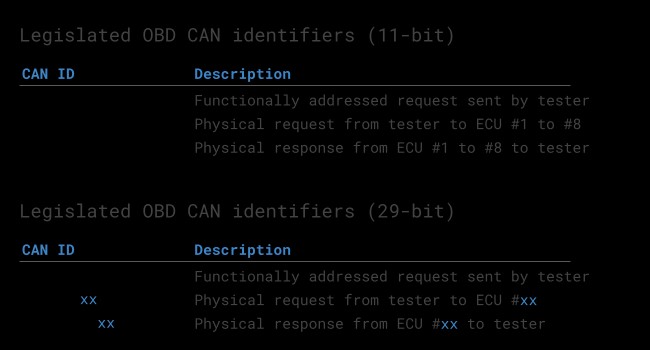
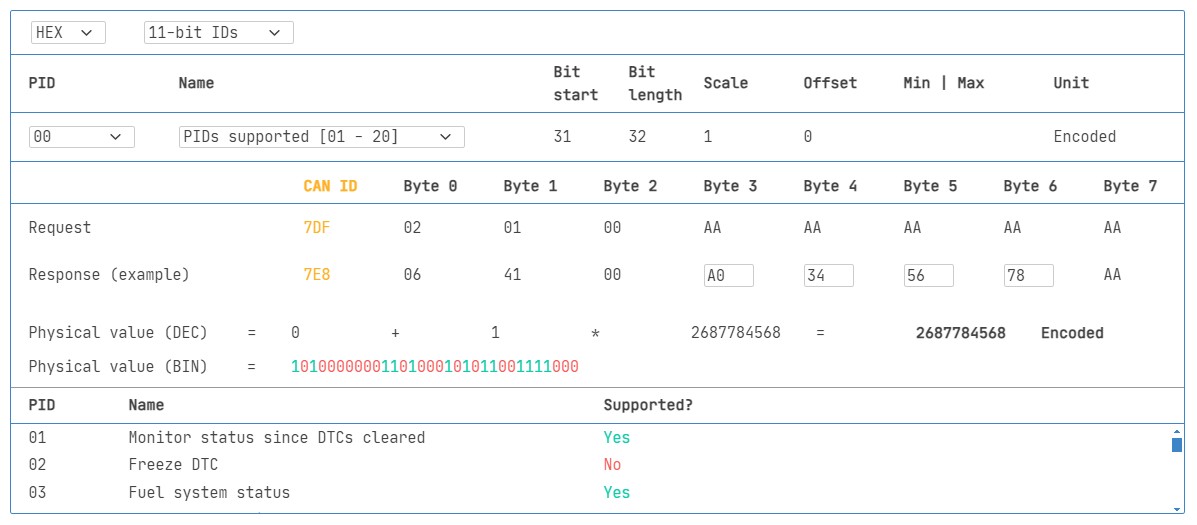

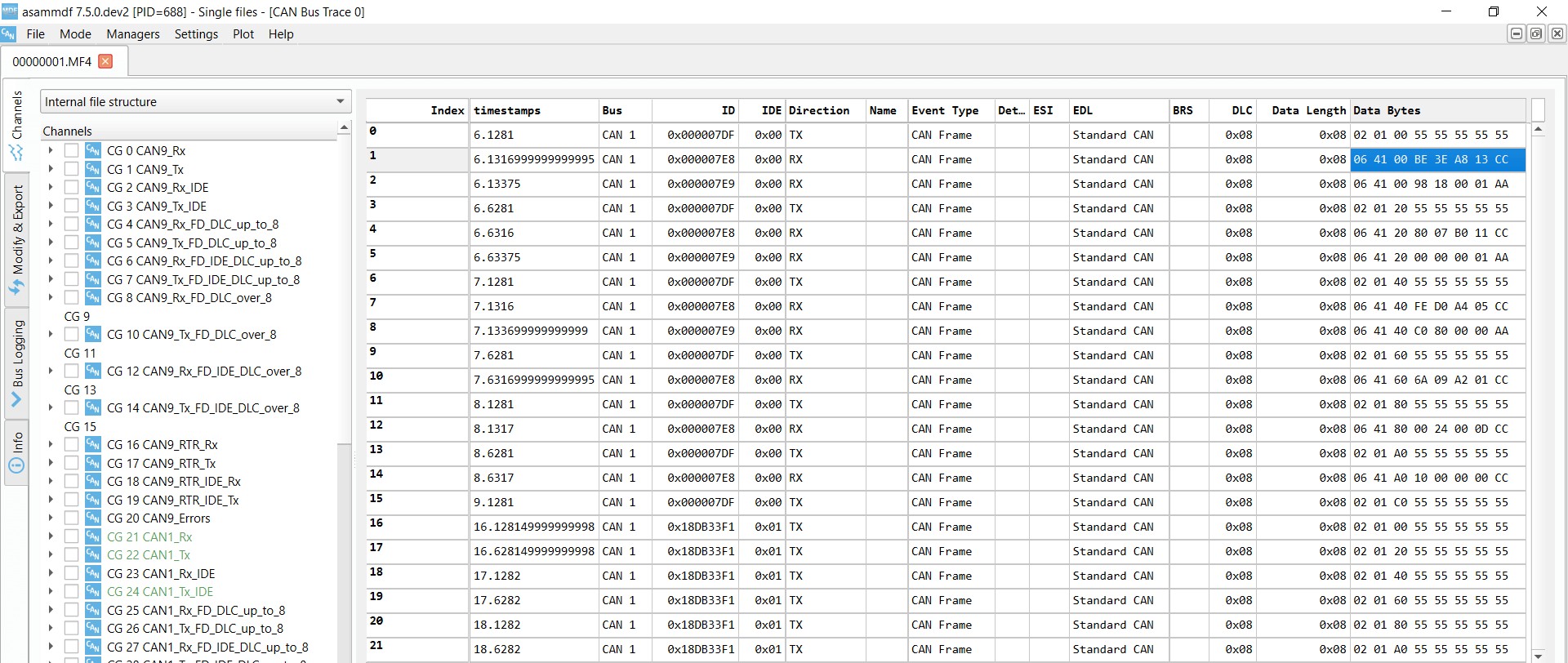
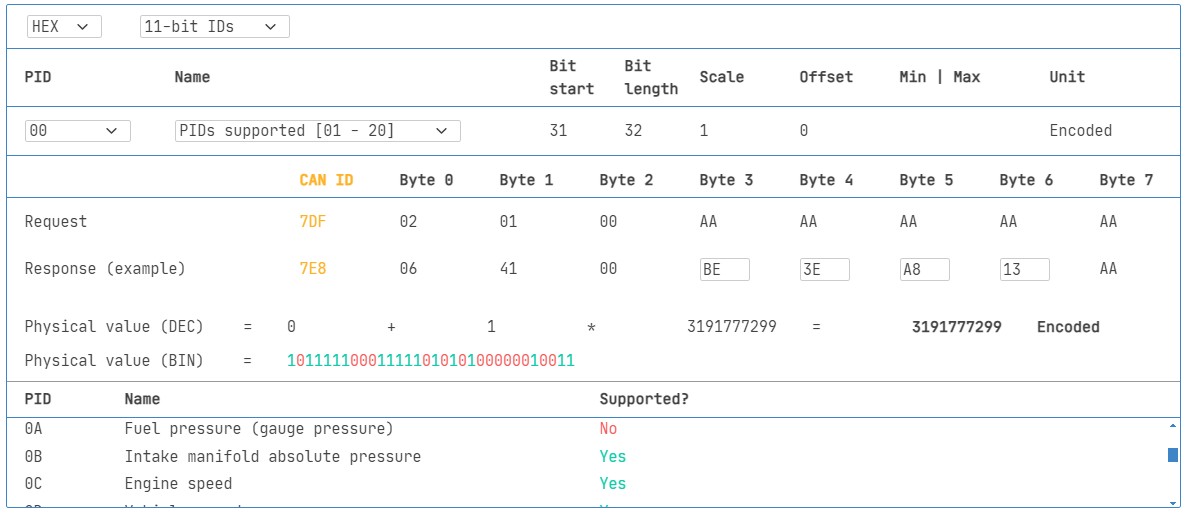




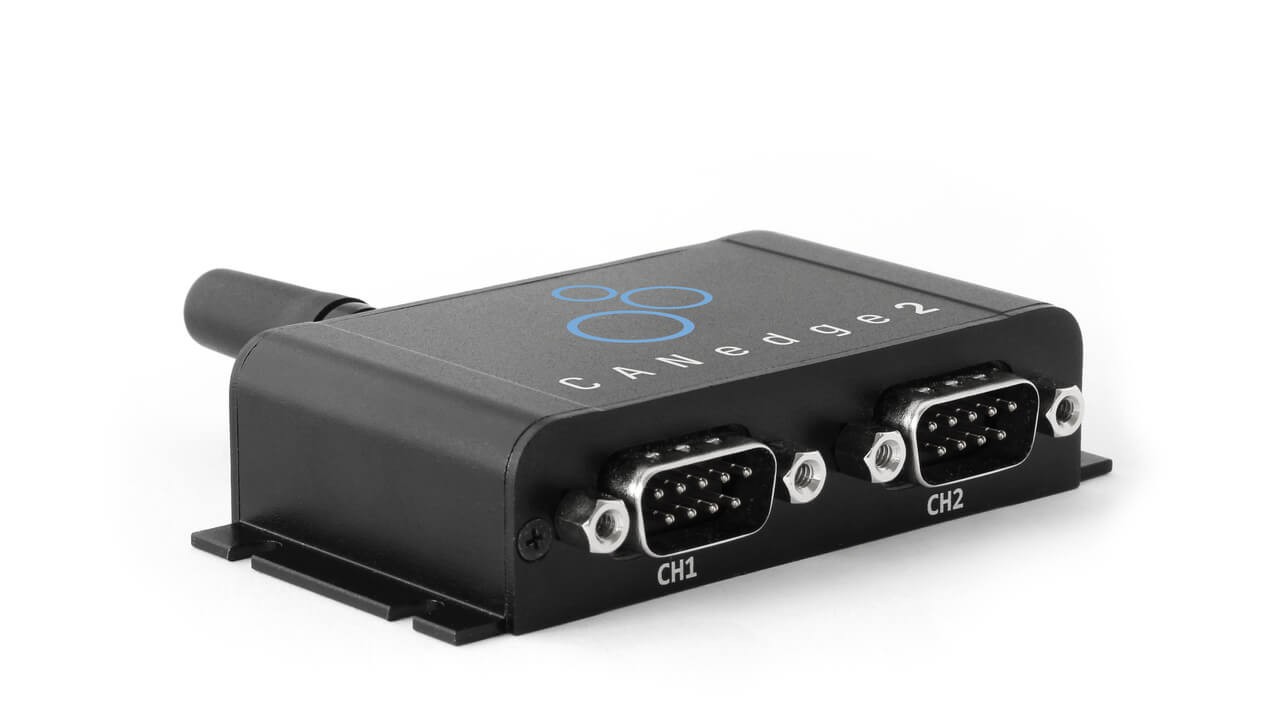
This widespread adoption of OBD2 is crucial because it standardizes the way we can access vehicle information, including the VIN. Before OBD2, accessing this data was often manufacturer-specific and complicated. Now, with a simple OBD2 scanner, retrieving the VIN electronically is readily achievable.
A chart illustrating OBD2 compliance by region and vehicle type, useful for verifying OBD2 support for VIN retrieval.
A Brief History of OBD2: From Emissions to VIN Access
The story of OBD2 begins in California, driven by the California Air Resources Board (CARB). In the early 1990s, CARB mandated OBD for all new cars sold in California starting from 1991 to monitor and control vehicle emissions.
The Society of Automotive Engineers (SAE) played a vital role in standardizing OBD2, defining diagnostic trouble codes (DTCs) and the universal OBD connector (SAE J1962). This standardization was a game-changer, making vehicle diagnostics more accessible and efficient across different manufacturers.
The OBD2 standard rollout then expanded globally:
- 1996: OBD2 became mandatory in the USA for cars and light trucks.
- 2001: The EU required OBD2 for gasoline cars.
- 2003: The EU extended the requirement to diesel cars (EOBD).
- 2005: OBD2 became mandatory in the US for medium-duty vehicles.
- 2008: US vehicles were required to use ISO 15765-4 (CAN) as the foundation for OBD2 communication.
- 2010: OBD2 was finally mandated for heavy-duty vehicles in the US.
While initially focused on emissions, the OBD2 standard’s ability to access various vehicle parameters, including the VIN, quickly became apparent and highly valuable for broader diagnostic and vehicle management purposes. The standardization made it possible to develop tools that could universally communicate with vehicles, making VIN retrieval and other data access much simpler.
The Future of OBD: Implications for VIN and Vehicle Data
OBD2 is firmly established, but its future is evolving. Here are some key trends to consider:
Originally designed for emissions testing, legislated OBD2 has a limitation: electric vehicles (EVs) aren’t obligated to support it. In practice, most modern EVs don’t utilize standard OBD2 requests. Instead, they often use OEM-specific UDS communication protocols. This makes accessing data from EVs, including the VIN, more challenging unless decoding methods are reverse-engineered, as seen in studies for brands like Tesla, Hyundai/Kia, Nissan, and VW/Skoda.
Modern alternatives like WWH-OBD (World Wide Harmonized OBD) and OBDonUDS (OBD on UDS) are emerging to address limitations in data richness and protocols. These aim to improve OBD communication using the UDS protocol.
Looking ahead, OBD3 envisions adding telematics to vehicles. This could involve a radio transponder in cars, enabling the wireless transmission of the vehicle identification number (VIN) and DTCs to a central server for automated checks. Devices like the CANedge2 and CANedge3 already facilitate data transfer via WiFi/cellular networks.
However, while convenient, OBD3 raises privacy concerns related to surveillance.
The automotive industry is also debating the future of OBD2 access for third parties. Originally intended for repair shops, OBD2 is now used extensively by third-party services. Some manufacturers propose limiting OBD2 functionality while driving, collecting data centrally instead. This could impact the third-party OBD2 service market and put manufacturers in control of “automotive big data.” Security concerns, like car hacking, are cited as reasons, but commercial motivations are also apparent.
It remains to be seen how these trends will shape OBD’s future and how VIN and vehicle data access will be affected.
Enhance Your Vehicle Expertise with Our CAN Bus Guide
Want to deepen your understanding of vehicle communication systems?
Our comprehensive ‘Ultimate CAN Guide’ offers 12 easy-to-understand introductions in a 160+ page PDF.
Download the CAN Bus Guide Now
OBD2 Standards: The Foundation for VIN Retrieval and Diagnostics
OBD2 acts as a “language” on top of communication methods like CAN bus. It’s a higher-layer protocol, similar to J1939, CANopen, and NMEA 2000. OBD2 standards define the connector, lower-layer protocols, OBD2 parameter IDs (PIDs), and more, all crucial for consistent VIN retrieval and diagnostic processes.
These standards can be visualized using the 7-layer OSI model. Interestingly, both SAE (US standards) and ISO (EU standards) cover several layers, reflecting the global harmonization of OBD. Many standards are technically equivalent, such as SAE J1979 and ISO 15031-5, or SAE J1962 and ISO 15031-3.
The OBD2 Connector [SAE J1962]: Your Physical Access Point for VIN
The 16-pin OBD2 connector, standardized by SAE J1962 / ISO 15031-3, provides easy access to your car’s data, including the VIN. This connector is your physical interface for using an OBD2 scanner to retrieve the VIN electronically.
Here are key points about the OBD2 connector:
- It’s typically located near the steering wheel, though sometimes hidden.
- Pin 16 provides battery power, even when the ignition is off.
- The OBD2 pinout varies depending on the communication protocol used.
- CAN bus is the most common lower-layer protocol, utilizing pins 6 (CAN-H) and 14 (CAN-L).
Understanding the OBD2 connector is essential for successfully connecting a scanner and initiating VIN retrieval or other diagnostic procedures.
OBD2 Connector Types: A and B
You might encounter Type A and Type B OBD2 connectors. Type A is standard in cars, while Type B is often found in medium and heavy-duty vehicles.
Both types have similar pinouts but differ in power supply: 12V for Type A and 24V for Type B. Baud rates can also vary, with cars typically at 500K and heavy-duty vehicles often at 250K (though 500K support is increasing).
Type B connectors have a distinguishing interrupted groove in the middle. A Type B OBD2 adapter cable will fit both Type A and B sockets, but a Type A adapter won’t fit a Type B socket.
OBD2 and CAN Bus [ISO 15765-4]: The Communication Backbone for VIN Data
Since 2008, CAN bus (Controller Area Network) has been the mandatory lower-layer protocol for OBD2 in US cars, as per ISO 15765. This means that when you use OBD2 to request your VIN or other data, the communication is likely happening over a CAN bus network.
ISO 15765-4 (Diagnostics over CAN or DoCAN) specifies how CAN is used for diagnostics, focusing on the physical, data link, and network layers:
- CAN bus bit-rate: 250K or 500K.
- CAN IDs: 11-bit or 29-bit.
- Specific CAN IDs for OBD requests/responses.
- Diagnostic CAN frame data length: 8 bytes.
- OBD2 adapter cable length: max 5 meters.
These specifications ensure reliable and standardized communication when retrieving your VIN and other diagnostic data via OBD2.
OBD2 CAN Identifiers (11-bit, 29-bit)
OBD2 communication involves request and response messages.
Most cars use 11-bit CAN IDs for OBD2. The ‘Functional Addressing’ ID 0x7DF broadcasts requests to all OBD2-compatible ECUs (Electronic Control Units). ‘Physical Addressing’ requests to specific ECUs use CAN IDs 0x7E0-0x7E7, though less common.
ECU responses typically use 11-bit IDs 0x7E8-0x7EF. 0x7E8 (ECM – Engine Control Module) and 0x7E9 (TCM – Transmission Control Module) are common response IDs.
Some vehicles, especially vans and medium/heavy-duty vehicles, use extended 29-bit CAN identifiers for OBD2. Here, the ‘Functional Addressing’ CAN ID is 0x18DB33F1. Responses use CAN IDs 0x18DAF100 to 0x18DAF1FF (e.g., 18DAF110 and 18DAF11E), sometimes represented as J1939 PGN 0xDA00 (55808).
Understanding these CAN identifiers is helpful for advanced OBD2 analysis and troubleshooting, especially when dealing with VIN retrieval or custom diagnostic applications.
OBD2 vs. Proprietary CAN Protocols: What You Need to Know for VIN Access
It’s important to realize that your car’s ECUs primarily operate using OEM-specific CAN protocols, not OBD2. OBD2 is an additional protocol for diagnostics and data access, including VIN retrieval. OEM protocols are brand, model, and year-specific, and typically proprietary (requiring reverse engineering to understand).
When you connect a CAN bus data logger to your OBD2 port, you might see OEM-specific CAN data, often broadcast at high rates. However, newer cars may have a ‘gateway’ that blocks access to this OEM data, allowing only OBD2 communication through the OBD2 connector.
Think of OBD2 as a parallel, standardized communication layer alongside the OEM’s proprietary system. For VIN retrieval and basic diagnostics, OBD2 is the accessible and standardized route.
Bit-rate and ID Validation: Ensuring Correct Communication for VIN Retrieval
OBD2 can use two bit-rates (250K, 500K) and two CAN ID lengths (11-bit, 29-bit), resulting in four possible combinations. Modern cars commonly use 500K and 11-bit IDs. Tools should systematically validate these settings to ensure proper OBD2 communication for VIN retrieval and other data access.
ISO 15765-4 provides a procedure to determine the correct combination, relying on the mandatory OBD2 response to a specific request (like mode 0x01 PID 0x00) and detecting CAN error frames caused by incorrect bit-rates.
Newer ISO 15765-4 versions consider OBDonUDS alongside OBDonEDS. This article mainly focuses on OBDonEDS (OBD2/SAE OBD/EOBD/ISO OBD) as it’s prevalent in non-EV cars. WWH-OBD/OBDonUDS is mainly used in EU trucks/buses.
To test for OBDonEDS vs. OBDonUDS, tools can send UDS requests with specific service and data identifier (DID) to check for ECU responses, indicating OBDonUDS support.
In practice, OBDonEDS is common in most non-EV cars today.
Five Lower-Layer OBD2 Protocols: Understanding Legacy Systems for VIN Access
While CAN (ISO 15765) is dominant today, older cars (pre-2008) might use other lower-layer protocols for OBD2. Knowing these can be helpful, especially when dealing with older vehicles for VIN retrieval or diagnostics. Pinouts can sometimes indicate the protocol in use.
- ISO 15765 (CAN bus): Mandatory in US cars since 2008; now widely used.
- ISO14230-4 (KWP2000): Common in 2003+ Asian cars.
- ISO 9141-2: Used in EU, Chrysler & Asian cars (2000-04).
- SAE J1850 (VPW): Primarily in older GM cars.
- SAE J1850 (PWM): Primarily in older Ford cars.
Transporting OBD2 Messages via ISO-TP [ISO 15765-2]: Handling VIN and Larger Data
OBD2 data communication over CAN bus relies on ISO-TP (ISO 15765-2), a transport protocol. This allows for messages larger than 8 bytes, necessary for transmitting the Vehicle Identification Number (VIN), Diagnostic Trouble Codes (DTCs), and other extended data. ISO 15765-2 handles segmentation, flow control, and reassembly of these larger messages.
However, much OBD2 data fits within a single CAN frame. In these cases, ISO 15765-2 specifies ‘Single Frame’ (SF) usage. The first data byte (PCI field) indicates payload length, leaving 7 bytes for OBD2 communication.
The OBD2 Diagnostic Message [SAE J1979, ISO 15031-5]: Requesting and Receiving VIN and Other Data
Let’s examine a raw ‘Single Frame’ OBD2 CAN message to understand its structure. Simplified, it includes an identifier, data length (PCI field), and data. The data is further broken down into Mode, parameter ID (PID), and data bytes.
Example: OBD2 Request/Response for Vehicle Speed (and Similar Process for VIN)
Consider a request/response example for ‘Vehicle Speed’. While this is a different PID than the VIN, the request/response structure is similar.
An external tool sends a request to the car (CAN ID 0x7DF) with 2 payload bytes: Mode 0x01 and PID 0x0D (Vehicle Speed). The car responds (CAN ID 0x7E8) with 3 payload bytes, including the speed value in the 4th byte, 0x32 (50 decimal).
OBD2 PID 0x0D’s decoding rules tell us 0x32 represents 50 km/h. The process for requesting and receiving the VIN follows a similar request/response pattern, just using different Mode and PID values (specifically Mode 0x09 and PID 0x02 for VIN).
The 10 OBD2 Services (aka Modes): Including VIN Retrieval Mode
OBD2 has 10 diagnostic services or modes. Mode 0x01 provides real-time data, while others handle DTCs or freeze frame data. Mode 0x09 is specifically for requesting vehicle information, including the VIN (PID 0x02).
Vehicles don’t need to support all OBD2 modes, and OEM-specific modes might exist.
In OBD2 messages, the mode is in the 2nd byte. Requests use the mode directly (e.g., 0x01 or 0x09). Responses add 0x40 to the mode (e.g., 0x41 or 0x49). For VIN retrieval, you’ll be interested in Mode 0x09.
OBD2 Parameter IDs (PIDs): Accessing Specific Data Like VIN
Each OBD2 mode contains Parameter IDs (PIDs). Mode 0x01, for example, has ~200 standardized PIDs for real-time data like speed, RPM, and fuel level. Mode 0x09 contains PIDs for vehicle information, and PID 0x02 specifically requests the VIN. However, vehicles only support a subset of PIDs within each mode.
One PID is crucial for compatibility testing: Mode 0x01 PID 0x00. If an emissions-related ECU supports any OBD2 services, it must support Mode 0x01 PID 0x00. Responding to this PID, the ECU indicates support for PIDs 0x01-0x20. This makes PID 0x00 a basic ‘OBD2 compatibility test’. PIDs 0x20, 0x40, …, 0xC0 similarly indicate support for subsequent PID ranges in Mode 0x01. While not directly VIN related, this PID is fundamental for OBD2 communication.
For VIN retrieval, you will primarily use Mode 0x09 and PID 0x02.
Tip: OBD2 PID Overview Tool – Useful for Understanding PID Structure Beyond Just VIN
SAE J1979 and ISO 15031-5 appendices detail scaling information for standard OBD2 PIDs, allowing you to convert raw data to physical values.
Our OBD2 PID overview tool is helpful for exploring Mode 0x01 PIDs. While it doesn’t directly list the VIN PID (which is in Mode 0x09), it helps you understand how PIDs are structured, requested, and decoded, providing valuable context for working with OBD2 data, including VIN retrieval.
Access the OBD2 PID overview tool
How to Retrieve Your VIN Number Using an OBD2 Scanner
Now, let’s get practical. Here’s how you can use an OBD2 scanner to retrieve your VIN:
- Get an OBD2 Scanner: You’ll need an OBD2 scanner. These range from basic handheld devices to more advanced Bluetooth or Wi-Fi scanners that connect to your smartphone or laptop.
- Locate the OBD2 Port: Find the OBD2 port in your car (usually under the dashboard on the driver’s side).
- Connect the Scanner: Plug the OBD2 scanner into the port. Turn your car’s ignition to the “ON” position, but you don’t need to start the engine.
- Select VIN Retrieval: Navigate the scanner’s menu to find options like “Vehicle Info,” “VIN,” or “Mode 09.” Different scanners will have slightly different interfaces, but look for a diagnostic service related to vehicle information.
- Read the VIN: The scanner should communicate with your car’s computer and display the VIN number.
Example using CANedge (for advanced users and data logging):
For users interested in more advanced logging and analysis, tools like CANedge can be used. Here’s a conceptual outline using CANedge:
- Configure CANedge: Set up CANedge to transmit OBD2 requests. This involves configuring CAN IDs (e.g., 0x7DF for functional requests), bit-rate, and the OBD2 request message for VIN retrieval (Mode 0x09, PID 0x02).
- Connect CANedge: Connect CANedge to your vehicle’s OBD2 port using an OBD2-DB9 adapter cable.
- Log Data: CANedge will log the CAN bus traffic, including the vehicle’s response to the VIN request.
- Analyze Data: Use software like asammdf to analyze the logged data. Filter for response CAN IDs (e.g., 0x7E8 + 0x40 = 0x7E8 for Mode 09 responses) and look for the multi-frame response containing the VIN (as detailed in the multi-frame examples below).
- Decode VIN: Decode the hexadecimal data in the response frames to ASCII characters to get the VIN.
Verifying correct bit rate for OBD2 communication setup.
Reviewing PID support using asammdf software.
OBD2 Multi-Frame Examples [ISO-TP]: VIN Retrieval and Beyond
As discussed, OBD2 often uses multi-frame communication (ISO-TP) for larger data like the VIN. Here are examples illustrating multi-frame requests and responses, particularly relevant for VIN retrieval.
Multi-frame communication involves flow control frames. In practice, sending a static flow control frame ~50ms after the initial request can work. Software tools like CANedge MF4 decoders are needed to handle multi-frame OBD2 responses.
Example 1: OBD2 Vehicle Identification Number (VIN) Retrieval (Mode 0x09 PID 0x02)
To retrieve the VIN, you use Mode 0x09 and PID 0x02.
The tool sends a Single Frame request with PCI field (0x02), service identifier (0x09), and PID (0x02).
The vehicle responds with a First Frame containing PCI, length (e.g., 0x014 = 20 bytes), mode (0x49), and PID (0x02). Byte 0x01 is the Number Of Data Items (NODI), in this case 1. The following 17 bytes are the VIN, which can be converted from HEX to ASCII.
Example 2: OBD2 Multi-PID Request (6x) – Less Relevant for VIN, More for Real-time Data
While you can request up to 6 Mode 0x01 PIDs in a single request, this is less relevant for VIN retrieval and more for efficiently getting real-time sensor data. We generally don’t recommend this method for VIN purposes.
Example 3: OBD2 Diagnostic Trouble Codes (DTCs) – Indirectly Related to VIN for Vehicle History
Requesting DTCs (Mode 0x03) is another common OBD2 function. While not directly VIN retrieval, DTCs are linked to a specific vehicle identified by its VIN and provide valuable vehicle history.
Why is Retrieving Your VIN via OBD2 Useful? Use Cases
Accessing your VIN through OBD2 offers numerous benefits:
- Verification: Instantly verify the VIN matches vehicle documents, especially useful when buying a used car.
- Diagnostics and Repair: When diagnosing issues, having the VIN readily available through OBD2 scanners helps ensure you’re working with the correct vehicle information for parts lookup, repair procedures, and accessing vehicle-specific databases.
- Telematics and Fleet Management: For fleet managers, OBD2 VIN retrieval is crucial for accurate vehicle identification in telematics systems, tracking, and maintenance scheduling.
- Data Logging and Analysis: In automotive research and development, retrieving the VIN via OBD2 in logged data ensures proper identification of the vehicle under test.
- Security and Anti-Theft: In some advanced applications, VIN retrieval via OBD2 can be integrated into security systems for vehicle identification and anti-theft measures.
OBD2 Data Logging Use Cases: Beyond VIN
OBD2 data, including the VIN, has diverse applications:
-
Car Data Logging: For fuel efficiency, driving improvement, prototype testing, and insurance purposes.
Explore OBD2 Loggers -
Real-time Car Diagnostics: Stream OBD2 data for live diagnostics and troubleshooting.
Learn about OBD2 Streaming -
Predictive Maintenance: Use IoT OBD2 loggers for cloud-based vehicle monitoring and breakdown prediction.
Discover Predictive Maintenance Solutions -
Vehicle Black Box: OBD2 loggers as ‘black boxes’ for data recording in case of disputes or for detailed diagnostics.
See CAN bus Black Box Loggers
Do you have an OBD2 data logging or VIN retrieval application in mind? Contact us for expert guidance!
Contact Our Team
For more introductory guides, explore our tutorials section or download the comprehensive ‘Ultimate Guide’ PDF.
Ready to start logging or streaming OBD2 data and accessing your VIN?
Get your OBD2 tools today!
Browse OBD2 Products Contact Us for Support
Recommended Resources: Further Explore OBD2 and VIN Access
OBD2 DATA LOGGER: EASILY LOG & CONVERT OBD2 DATA
CANEDGE2 – PRO CAN IoT LOGGER
[